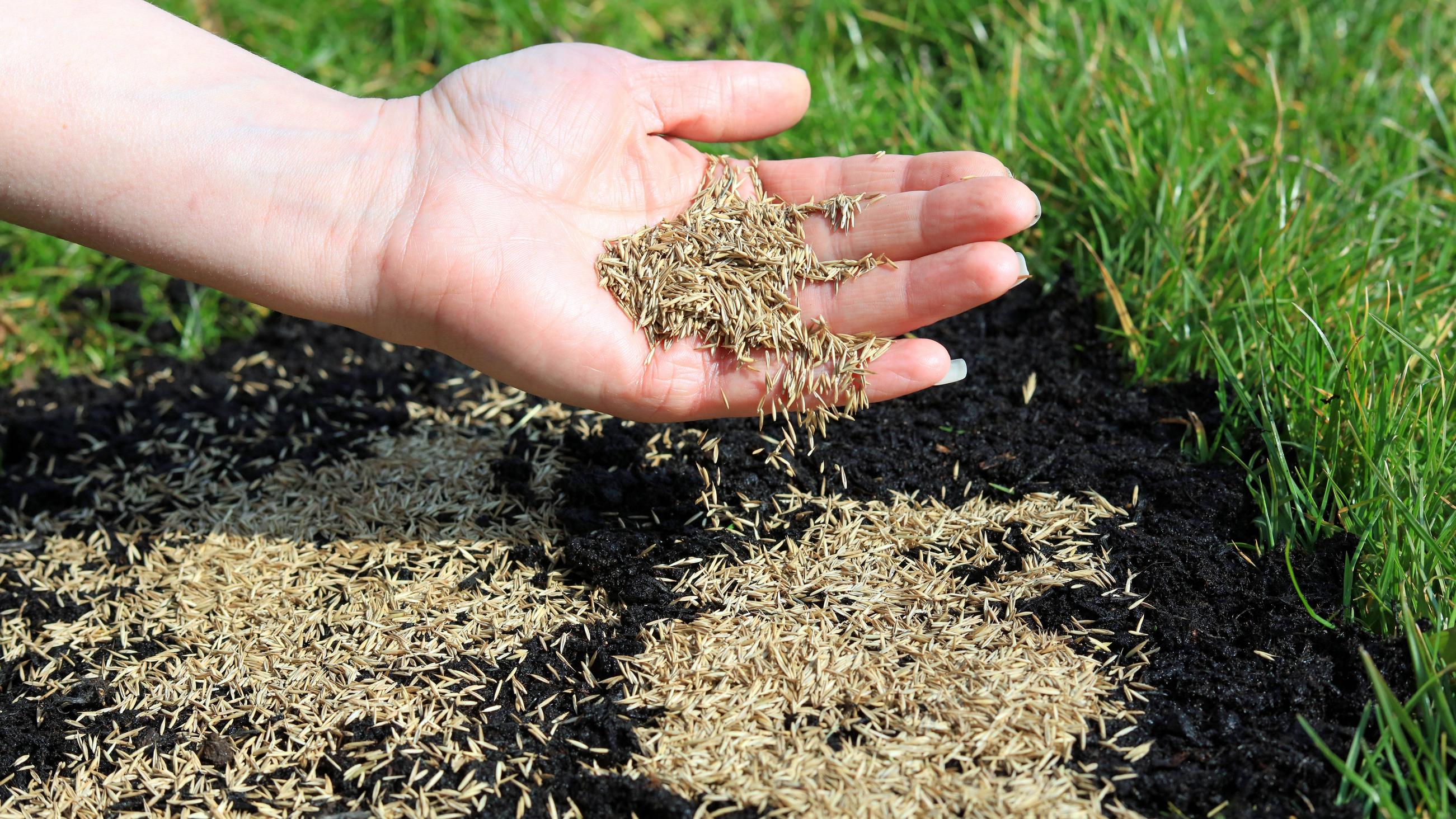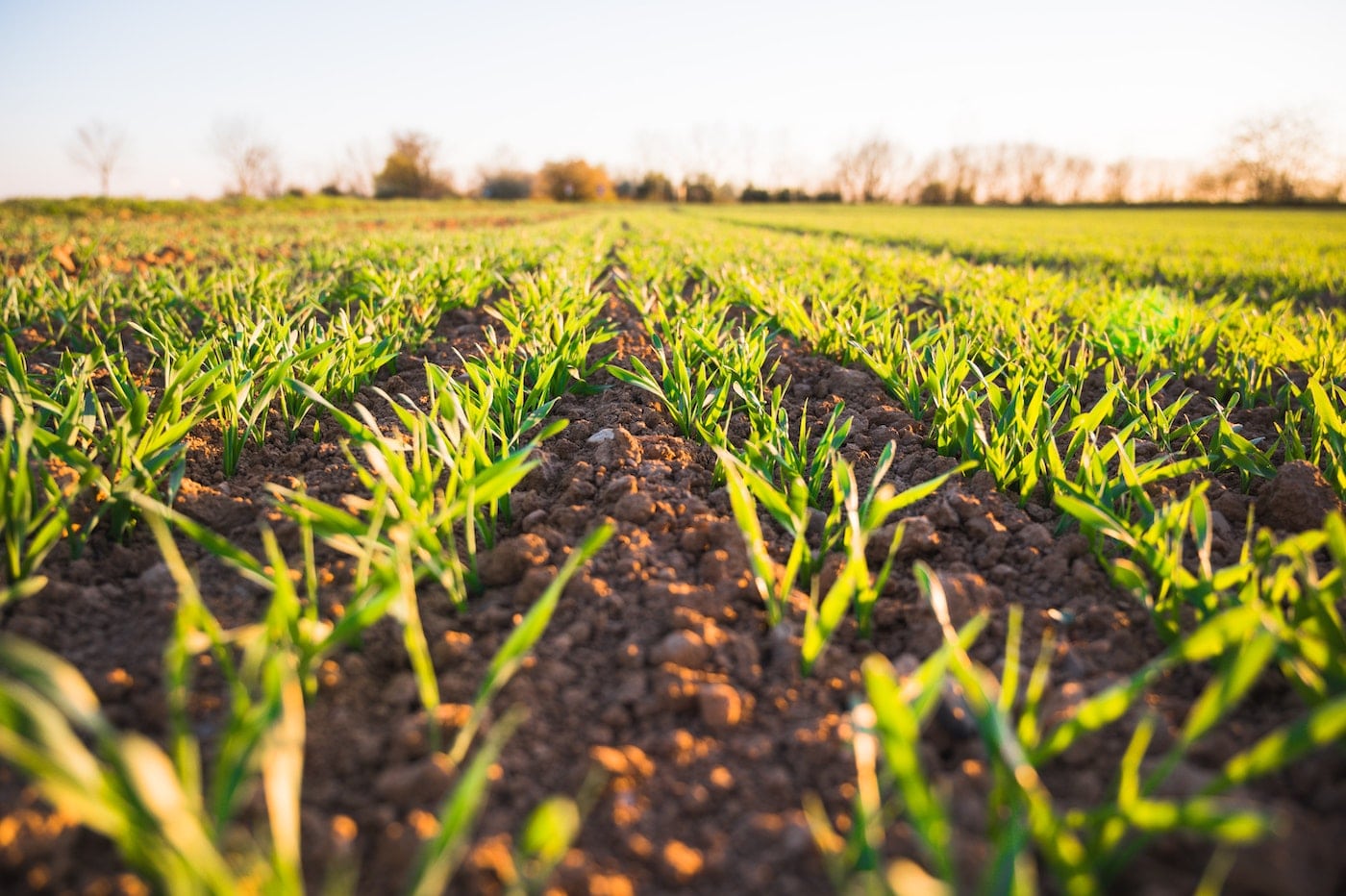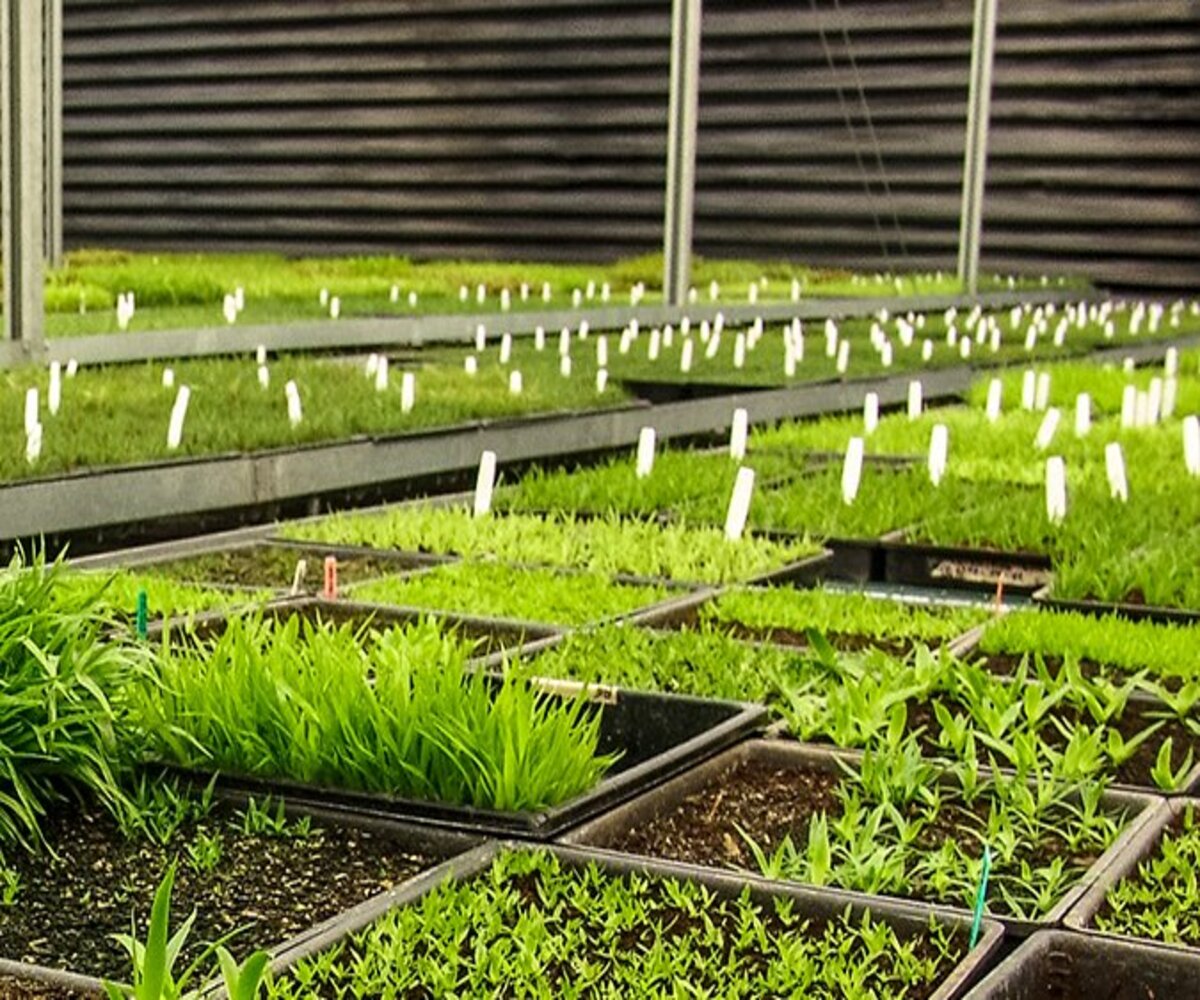Home>Gardening News and Trends>What Element Is Used In Fertilizer


Gardening News and Trends
What Element Is Used In Fertilizer
Published: August 5, 2023
Discover the latest news about the element used in fertilizer. Stay informed and get updates on the latest trends and advancements in the field.
(Many of the links in this article redirect to a specific reviewed product. Your purchase of these products through affiliate links helps to generate commission for Chicagolandgardening.com, at no extra cost. Learn more)
Table of Contents
- Introduction
- The Importance of Fertilizers in Agriculture
- Understanding Elements in Fertilizers
- Common Elements Used in Fertilizers
- Nitrogen as an Essential Element in Fertilizers
- Phosphorus as an Essential Element in Fertilizers
- Potassium as an Essential Element in Fertilizers
- Other Elements Used in Fertilizers
- Conclusion
Introduction
Fertilizers play a crucial role in modern agriculture, helping to enhance crop yields and promote healthy plant growth. These concoctions of essential nutrients provide plants with the necessary elements they need to thrive in various soil conditions.
In this article, we will explore the different elements used in fertilizers and their importance in promoting agricultural productivity. Understanding these elements will shed light on how fertilizers contribute to sustainable food production and address the challenges faced by farmers worldwide.
The use of fertilizers dates back centuries, with early farmers recognizing the benefits of supplementing nutrient-depleted soils. Today, fertilizers are used on a large scale to ensure optimal plant nutrition and maximize agricultural output.
However, it is important to note that not all fertilizers are created equal. Different types of fertilizers contain various ratios and combinations of elements, tailored to meet the specific needs of different crops and soil conditions.
By delving into the world of fertilizers and their elemental composition, we can gain a better understanding of how they support sustainable agriculture and contribute to global food security. Let us now dive into the diverse range of elements found in fertilizers and their significance in promoting healthy plant growth.
The Importance of Fertilizers in Agriculture
Fertilizers play a vital role in modern agriculture by supplying essential nutrients to crops, ensuring their optimal growth and productivity. They provide plants with the necessary elements that may be deficient in the soil, promoting healthy plant development and enhancing overall crop yields.
One of the primary benefits of fertilizers is their ability to compensate for nutrient deficiencies in the soil. Soils naturally vary in their nutritional composition, and certain regions may lack sufficient levels of key nutrients required for plant growth. By using fertilizers, farmers can supplement these nutrients, ensuring that crops have access to a balanced and adequate supply.
Fertilizers also help to improve soil fertility and structure. Over time, continuous cultivation and harvesting can deplete the soil of essential nutrients, making it less productive. Fertilizers replenish these nutrients, revitalizing the soil’s fertility and supporting sustained agricultural productivity.
Furthermore, fertilizers allow farmers to maximize their crop yields. By providing plants with the necessary elements for growth, they can achieve optimal development, leading to higher yields per acre. This is especially crucial in regions with limited arable land, where every bit of productivity matters in meeting the food demands of a growing population.
In addition to boosting plant growth, fertilizers can also enhance crop quality. The balanced supply of nutrients enables plants to develop strong root systems, resist diseases and pests, and produce healthier and more nutritious produce. This not only benefits consumers but also improves market value and the economic viability of farming operations.
Moreover, by using fertilizers, farmers can practice precise nutrient management. With the ability to adjust fertilizer formulations, farmers can match specific nutrient requirements of different crops, growth stages, and soil conditions. This allows for efficient allocation of resources, reducing waste and potential environmental pollution.
Overall, the importance of fertilizers in agriculture cannot be understated. They play a vital role in sustainable agriculture, ensuring the availability of nutritious food, supporting economic growth in rural communities, and addressing the challenges of food security and global hunger.
Understanding Elements in Fertilizers
Fertilizers consist of various elements that are critical for plant growth and development. These elements are essential nutrients, each serving a specific purpose in supporting plant health and productivity. Understanding these elements is key to using fertilizers effectively in agriculture.
The three main elements found in fertilizers, often referred to as macronutrients, are nitrogen (N), phosphorus (P), and potassium (K). These elements are denoted by their chemical symbols on fertilizer labels, representing the percentage of each nutrient in the composition.
Nitrogen (N) is vital for plant growth and plays a crucial role in various biological processes. It is an essential component of proteins, enzymes, chlorophyll, and DNA. Nitrogen promotes vegetative growth, influencing leaf development, stem elongation, and overall plant vigor.
Phosphorus (P) is essential for energy transfer within plants, playing a key role in processes such as photosynthesis, cell division, and DNA synthesis. It contributes to root development, seed formation, and overall plant vitality. Phosphorus is particularly important during a plant’s early growth stages.
Potassium (K) is involved in many physiological processes within plants, such as regulating water usage, improving disease resistance, and promoting enzyme activity. Potassium contributes to balanced plant growth, enhances fruit quality, and plays a role in overall plant stress tolerance.
In addition to these macronutrients, fertilizers may also contain secondary elements and micronutrients. Secondary elements include calcium (Ca), magnesium (Mg), and sulfur (S), which are required in smaller quantities but still play crucial roles in plant nutrition. Micronutrients, such as iron (Fe), zinc (Zn), copper (Cu), manganese (Mn), boron (B), molybdenum (Mo), and chlorine (Cl), are needed in trace amounts, yet their presence is necessary for various enzymatic and metabolic functions.
When selecting a fertilizer, it is important to consider the specific nutrient needs of the plants and the soil conditions. Soil testing can provide valuable insights into existing nutrient levels, helping farmers choose the appropriate fertilizer formulation to address any deficiencies. Applying the correct balance of nutrients is crucial for ensuring plant health, preventing nutrient imbalances, and optimizing crop productivity.
Understanding the elements in fertilizers allows farmers to tailor their nutrient management practices, improve crop health, and optimize resource utilization. By providing plants with the essential nutrients they require, fertilizers play a vital role in promoting sustainable agriculture and ensuring a consistent and reliable food supply.
Common Elements Used in Fertilizers
Fertilizers are formulated using a variety of elements to address specific nutrient requirements in different crops and soils. While the composition can vary, there are several common elements that are widely used in fertilizer formulations. Understanding these elements is essential for effective nutrient management in agriculture.
Nitrogen (N) is one of the most prevalent elements used in fertilizers. It promotes vegetative growth, enhances leaf development, and improves overall plant vigor. Nitrogen is commonly sourced from ammonium nitrate, ammonium sulfate, urea, and other nitrogen-containing compounds. Fertilizers with high nitrogen content are often used for crops that require abundant foliage, such as leafy vegetables, grasses, and corn.
Phosphorus (P) is another crucial element found in many fertilizers. It plays a vital role in root development, flower formation, and seed production. Phosphorus is commonly derived from phosphate rock and is available in different forms such as monoammonium phosphate (MAP) and diammonium phosphate (DAP). Fertilizers rich in phosphorus are beneficial for crops during the early growth stages and for promoting healthy flower and fruit production.
Potassium (K) is an essential nutrient that assists in many physiological processes within plants. It helps regulate water uptake and usage, improves disease resistance, and promotes overall plant vigor. Common sources of potassium in fertilizers include potassium chloride, potassium sulfate, and potassium nitrate. Fertilizers with high potassium content are particularly important for crops that require strong stalks, sturdy root systems, and superior fruit quality.
Calcium (Ca) and magnesium (Mg) are secondary elements that are often included in fertilizers. They are essential for healthy plant growth and are involved in various metabolic processes. Calcium contributes to cell wall development, disease prevention, and improved plant structure. Magnesium plays a vital role in chlorophyll production, photosynthesis, and enzyme activation. Fertilizers with calcium and magnesium are commonly used to address deficiencies in soils and promote balanced nutrition for crops.
In addition to these primary and secondary elements, fertilizers may also contain micronutrients such as iron (Fe), zinc (Zn), copper (Cu), manganese (Mn), boron (B), molybdenum (Mo), and chlorine (Cl). These micronutrients are required in smaller quantities but are vital for specific enzymatic and metabolic functions within plants. Fertilizer formulations with micronutrients help address deficiency symptoms and ensure optimal plant growth and development.
By understanding the common elements used in fertilizers, farmers can select the appropriate formulations to meet the specific nutrient requirements of their crops and soils. It is important to consider factors such as soil pH, nutrient deficiencies, and crop needs when choosing the right fertilizer. Regular soil testing and nutrient monitoring can provide valuable insights for optimal nutrient management, allowing for improved crop health and increased agricultural productivity.
Nitrogen as an Essential Element in Fertilizers
Nitrogen (N) is a vital nutrient that plays a crucial role in plant growth and development. It is an essential element found in many fertilizers due to its significant impact on crop productivity. Understanding the importance of nitrogen in fertilizers is essential for effective nutrient management in agriculture.
Nitrogen is a key component of proteins, enzymes, chlorophyll, and DNA, which are essential for various biological processes within plants. It is involved in photosynthesis, respiration, and the synthesis of amino acids, the building blocks of proteins. Nitrogen is also necessary for plant cell division and overall plant vigor.
One of the primary benefits of nitrogen in fertilizers is its ability to promote vegetative growth. It influences leaf development, stem elongation, and overall plant size. Adequate nitrogen supply results in lush foliage and vigorous growth, making it particularly important for crops that require abundant leaves, such as leafy vegetables, grasses, and corn.
Fertilizers rich in nitrogen can significantly enhance crop yields. By providing plants with sufficient nitrogen, farmers can maximize the photosynthetic potential of their crops, resulting in increased biomass production and higher yields per acre. This is particularly important in regions with limited arable land, where efficient use of available resources is critical for meeting food demands.
Nitrogen also plays a vital role in improving the quality of harvested produce. It promotes the synthesis of essential compounds, such as amino acids, vitamins, and pigments, which contribute to the overall nutritional value and marketability of the crops. Nitrogen helps plants resist disease and insect attacks, enhancing their ability to produce healthier and more desirable fruits and vegetables.
However, proper nitrogen management is essential to avoid potential negative impacts. Excessive nitrogen application can lead to imbalances in plant nutrition and environmental issues. Nitrogen is highly soluble and prone to leaching, which can contaminate groundwater and water bodies, leading to pollution. It is crucial for farmers to follow responsible nitrogen management practices, considering soil conditions, crop needs, and environmental sustainability.
By incorporating nitrogen into fertilizers, farmers can provide plants with the necessary nutrient for optimal growth and development. Effective nitrogen management is crucial to promote sustainable agriculture, improve crop yields, and ensure the availability of nutritious food.
Phosphorus as an Essential Element in Fertilizers
Phosphorus (P) is an essential element found in many fertilizers due to its critical role in plant growth and development. It is involved in various biological processes and is necessary for optimal crop productivity. Understanding the importance of phosphorus in fertilizers is crucial for effective nutrient management in agriculture.
Phosphorus plays a vital role in energy transfer within plants. It is a key component of adenosine triphosphate (ATP), the molecule responsible for storing and releasing energy during cellular processes. ATP is essential for photosynthesis, respiration, and other metabolic activities, making phosphorus an indispensable element for plant growth.
One of the primary functions of phosphorus in fertilizers is promoting root development. Phosphorus supports the growth of healthy and robust root systems, enabling plants to extract water and nutrients from the soil more efficiently. Well-developed roots enhance the plant’s ability to absorb other essential nutrients, resulting in improved overall plant health and productivity.
Phosphorus is especially important during the early stages of plant growth. It facilitates seedling establishment, ensuring strong and healthy seedling emergence. Adequate phosphorus supply during this critical phase promotes faster root growth, reducing the vulnerability of young plants to stress and enhancing their ability to compete with weeds.
Additionally, phosphorus contributes to flower and fruit formation in plants. It plays a crucial role in reproductive processes, aiding in the development of flowers, seeds, and fruits. Adequate phosphorus supply during the reproductive stage is essential for ensuring proper pollination, seed set, and fruit development. This makes phosphorus particularly important for crops that produce edible fruits, such as tomatoes, peppers, and melons.
Furthermore, phosphorus is involved in DNA synthesis, cell division, and the transfer of genetic information within plants. It contributes to the production of enzymes, ATP, and other essential compounds, which are crucial for various metabolic and growth processes. Phosphorus also helps plants withstand environmental stresses, such as drought and disease, by enhancing their resilience and overall vigor.
It is important to note that phosphorus availability in soils can be limited. Factors such as pH, organic matter content, and soil type can affect the accessibility of phosphorus to plants. Adequate phosphorus fertilization helps overcome these limitations, ensuring that crops have sufficient levels of this essential nutrient for optimal growth and development.
By incorporating phosphorus into fertilizers, farmers can provide their crops with the necessary nutrient to promote healthy root development, reproductive processes, and overall plant vigor. Effective phosphorus management is crucial for sustainable agriculture, improving crop quality, and maximizing yields.
Potassium as an Essential Element in Fertilizers
Potassium (K) is an essential element found in many fertilizers due to its vital role in promoting plant growth and development. It is involved in numerous physiological processes and is necessary for optimal crop productivity. Understanding the importance of potassium in fertilizers is crucial for effective nutrient management in agriculture.
One of the primary functions of potassium in fertilizers is regulating water usage within plants. Potassium plays a crucial role in osmoregulation, helping plants maintain water balance and enhancing their ability to withstand drought and water stress. It influences the opening and closing of stomata, reducing water loss through transpiration and improving water-use efficiency.
Potassium is also involved in nutrient uptake and assimilation within plants. It aids in the activation of enzymes that facilitate the transport and utilization of other essential nutrients. Adequate potassium supply enhances the plant’s ability to absorb and utilize nitrogen, phosphorus, and other elements, promoting overall nutrient efficiency and improving plant health.
In addition to water regulation and nutrient uptake, potassium contributes to enzyme activation and various metabolic processes within plants. It plays a crucial role in carbohydrate metabolism, facilitating the conversion of sugars into energy for growth and development. Potassium also aids in the synthesis of proteins and nucleic acids, supporting cell division and overall plant growth.
Furthermore, potassium enhances disease resistance in plants. Adequate potassium levels improve the structural integrity of plant tissues, making them less susceptible to pathogens. It also activates defense mechanisms within plants, helping them ward off diseases and reducing the impact of environmental stresses, such as extreme temperatures and certain pests.
Potassium is particularly important for crops that require strong stalks and sturdy root systems. It aids in the development of robust plant structures, making them more resistant to lodging (falling over) and improving their ability to withstand adverse weather conditions, such as strong winds and heavy rainfall.
Moreover, potassium promotes improved fruit quality in crops. It enhances the accumulation of sugars, pigments, and other compounds responsible for flavor, color, and nutritional value. Potassium-rich fertilizers can enhance fruit shelf-life, improve post-harvest quality, and increase market value.
However, it is important to note that excessive potassium application can negatively affect overall plant health and nutrient balance. An imbalanced potassium supply can interfere with the uptake and assimilation of other essential nutrients, leading to deficiencies or toxicities. Proper potassium management, based on soil testing and crop needs, is crucial for optimal plant nutrition and sustainable agriculture.
By incorporating potassium into fertilizers, farmers can provide crops with sufficient levels of this essential nutrient, promoting water and nutrient regulation, disease resistance, and overall plant vigor. Effective potassium management is vital for sustainable agriculture, improving crop quality, and maximizing yields.
Other Elements Used in Fertilizers
In addition to the primary macronutrients – nitrogen, phosphorus, and potassium – fertilizers may also contain secondary elements and micronutrients. These other elements are crucial for plant growth and development, albeit required in smaller quantities. Understanding their role in fertilizers is essential for comprehensive nutrient management in agriculture.
Calcium (Ca) is a secondary element found in some fertilizers. It plays a crucial role in cell wall development, cell division, and overall plant structure. Calcium is important for preventing disorders such as blossom end rot in tomatoes, tip burn in lettuce, and bitter pit in apples. Fertilizers that contain calcium can help address deficiencies in soils lacking this essential nutrient.
Magnesium (Mg) is another secondary element commonly seen in fertilizers. It is a central component of chlorophyll, the pigment responsible for capturing sunlight during photosynthesis. Magnesium is also involved in regulating enzyme reactions and promoting the synthesis of DNA and RNA. Fertilizers rich in magnesium help overcome deficiencies, supporting optimal plant growth and development.
Sulfur (S) is a secondary element necessary for various metabolic processes within plants. It is involved in the synthesis of amino acids, proteins, and enzymes. Sulfur also contributes to the formation of vitamins, the defense against pests and diseases, and the promotion of overall plant vigor. Fertilizers with sulfur can aid in addressing deficiencies and promoting balanced plant nutrition.
In addition to the secondary elements, fertilizers may contain micronutrients that are required in trace amounts but are crucial for plant health. These micronutrients include iron (Fe), zinc (Zn), copper (Cu), manganese (Mn), boron (B), molybdenum (Mo), and chlorine (Cl). Each micronutrient plays a specific role in enzymatic and metabolic processes within plants.
Iron is essential for chlorophyll production, zinc is involved in enzyme activity and protein synthesis, copper is crucial for various physiological functions, manganese contributes to photosynthesis and antioxidant systems, boron supports cell wall structure, molybdenum aids in nitrogen fixation, and chlorine is necessary for osmoregulation.
These micronutrients are essential for proper plant growth, development, and overall health. Fertilizers formulated with micronutrients can help address deficiencies and ensure that crops have access to these vital elements for their various metabolic functions.
When using fertilizers containing secondary elements and micronutrients, it is important to consider the specific needs of the crop and the soil conditions. Soil testing can help identify any deficiencies or imbalances, allowing farmers to select the appropriate fertilizer formulation to meet the nutrient requirements of their crops.
By incorporating these other elements – secondary elements and micronutrients – into fertilizers, farmers can promote balanced nutrition, address specific nutrient deficiencies, and support optimal plant growth and development. Comprehensive fertilization practices that consider all essential elements contribute to sustainable agriculture, improved crop quality, and enhanced yields.
Conclusion
Fertilizers play a vital role in modern agriculture, providing plants with essential nutrients to promote healthy growth and maximize crop yields. Understanding the elements used in fertilizers is crucial for effective nutrient management in agriculture and ensuring sustainable food production.
Nitrogen, phosphorus, and potassium are the primary macronutrients found in fertilizers. Nitrogen supports vegetative growth, phosphorus aids in root development and reproductive processes, and potassium regulates water usage and enhances disease resistance. These three elements are vital for plant health and are the backbone of fertilizer formulations.
In addition to the primary macronutrients, fertilizers may contain secondary elements such as calcium, magnesium, and sulfur, which contribute to overall plant nutrition and growth. Micronutrients, including iron, zinc, copper, manganese, boron, molybdenum, and chlorine, are also present in some fertilizers to address specific nutrient deficiencies and support vital metabolic processes.
The proper selection and application of fertilizers based on crop needs and soil conditions are essential for optimal nutrient management. Soil testing and regular monitoring can help farmers identify nutrient deficiencies, allowing them to choose the appropriate fertilizer formulations to meet the specific needs of their crops.
By understanding the importance of the elements in fertilizers, farmers can improve crop health, enhance yield potential, and ensure the availability of nutritious food. Proper nutrient management practices contribute to sustainable agriculture, economic viability, and the overall goal of feeding a growing global population.
In conclusion, fertilizers, with their diverse range of elements, provide essential nutrients to plants, supporting their growth and development. By incorporating the right balance of elements into fertilizers and applying them effectively, farmers can nurture vigorous and productive crops, contributing to sustainable food production and global food security.










